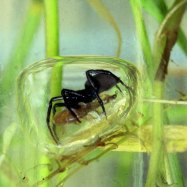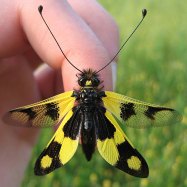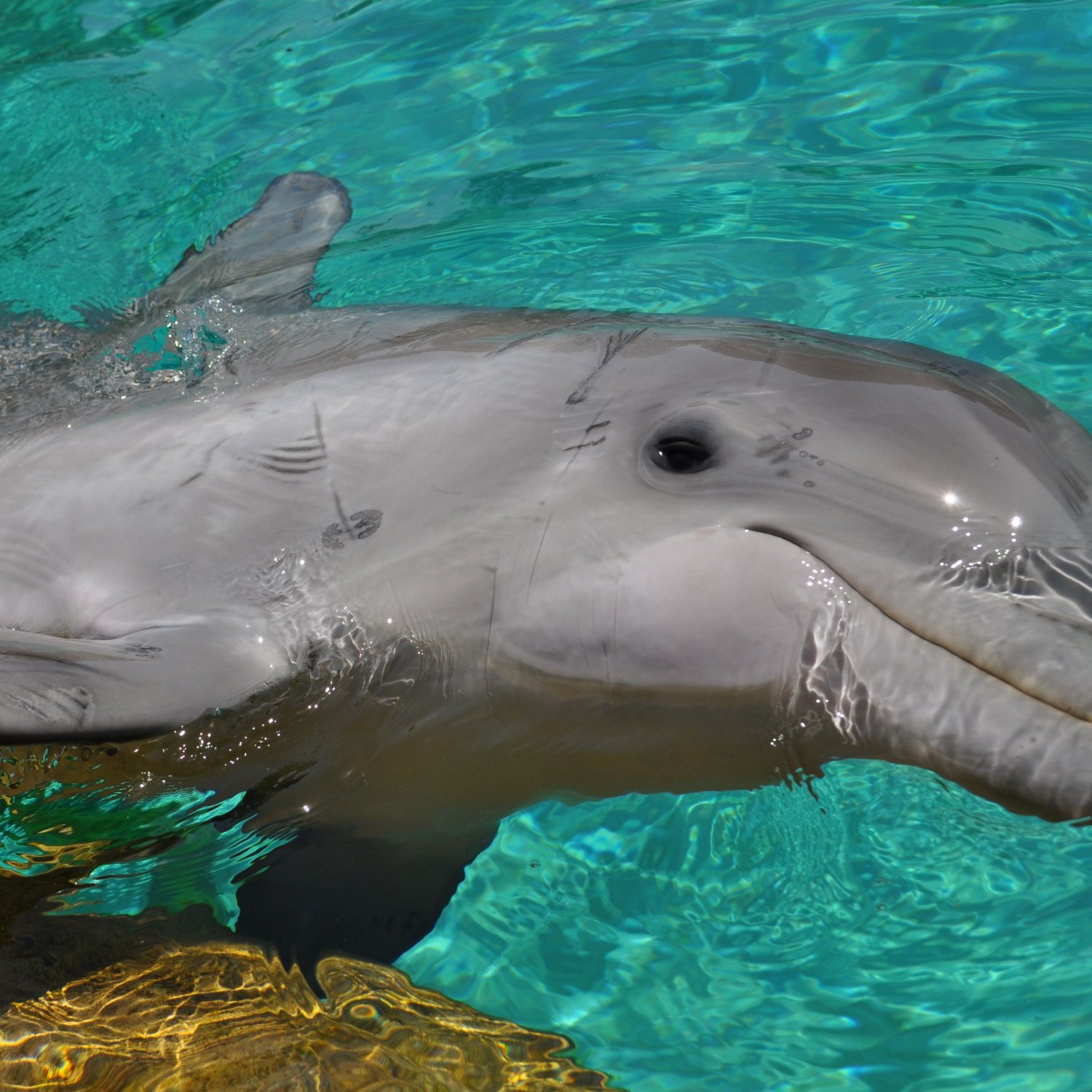
Dolphin
8 to 12 feet
Dolphins are fascinating creatures that can be found in oceans, seas, and some large rivers all over the world. They are members of the Delphinidae family and have a streamlined and muscular body shape. With an average length of 8 to 12 feet, these intelligent animals are known for their acrobatic abilities and playful personalities, making them a beloved species to encounter in the wild. Keep your eyes peeled while near the water, and you may just catch a glimpse of these majestic creatures in action.
Animal Details Summary:
Common Name: Bottlenose Dolphin
Kingdom: Animalia
Habitat: Marine
The Intelligent and Graceful Bottlenose Dolphin: A Master of the Seas
The dolphin, also known as "Delphinus delphis" is a fascinating and incredibly intelligent creature that has captured the hearts and minds of humans for centuries. With their sleek and streamlined bodies, playful nature, and remarkable intelligence, these creatures have become a symbol of grace and beauty in the animal kingdom. The most iconic of all dolphin species is the Bottlenose Dolphin, a marine mammal that has captured the attention of people all over the world.The Science Behind the Name
Scientifically known as Delphinus delphis, the Bottlenose Dolphin belongs to the kingdom Animalia and phylum Chordata Dolphin. They are classified as mammals, belonging to the class mammalia, and the order Cetacea. Within this order, they are part of the family Delphinidae, which also includes other dolphin species such as the Spinner Dolphin and the Common Dolphin.A Natural Habitat for the Bottlenose Dolphin
Bottlenose Dolphins are found in marine environments all around the world. They are known to inhabit the oceans, seas, and even some large rivers. This widespread distribution is due to their adaptability and agile nature, allowing them to thrive in different types of habitats. They are also highly social creatures, often found in groups called pods, which can range from a few individuals to hundreds of dolphins.Feeding Habits of a Carnivorous Creature
As carnivores, Bottlenose Dolphins primarily feed on fish and squid, but their diet can vary depending on their location and availability of prey. They use their keen echolocation skills to locate their prey and then use their streamlined, muscular bodies to swiftly chase and capture their food. They are also known to work together in a coordinated hunt, which is a testament to their high level of intelligence and communication skills Dapple Dachshund.The Worldwide Distribution of Bottlenose Dolphins
One of the most intriguing aspects of the Bottlenose Dolphin is their widespread distribution. They are found in almost every ocean of the world, from the tropical waters of the Caribbean to the cooler waters of the North Sea. They also inhabit some large rivers, such as the Amazon and Ganges, displaying their adaptability to various environments.The Country of Origin for Bottlenose Dolphins
Bottlenose Dolphins are not endemic to any specific country, as they are found in various locations around the world. However, some regions are known to have a higher population of these magnificent creatures, such as the coast of Australia and the Mediterranean Sea. In these areas, they have become a significant tourist attraction, with people coming from all over the world to catch a glimpse of these graceful creatures.Physical Characteristics of the Bottlenose Dolphin
Bottlenose Dolphins have a distinctive appearance, with their elongated, beak-like snout and dark gray coloring. However, their body size and shape can vary depending on their location and environmental factors. Generally, they can measure between 8 to 12 feet in length and weigh anywhere from 300 to 1400 pounds. Their streamlined bodies are perfectly adapted for living in the water, allowing them to swim at high speeds and maneuver effortlessly in the ocean.The Intelligent Mind of a Bottlenose Dolphin
Aside from their physical abilities, Bottlenose Dolphins are known for their intelligence, which is on par with other highly intelligent species such as gorillas and elephants. They have a large, sophisticated brain, which allows them to solve problems, communicate with one another through a series of clicks and whistles, and even recognize themselves in a mirror. They also display complex social behaviors, such as caring for sick or injured pod members and intentionally teaching their young how to use tools.Human Interaction with the Bottlenose Dolphin
For centuries, humans have been fascinated by dolphins, and the Bottlenose Dolphin is no exception. They have been featured in ancient Greek myths and legends, and to this day, continue to captivate people's hearts and minds. In recent years, they have also become widely used in the entertainment industry, with dolphin shows and swim-with-dolphin experiences being popular tourist attractions in many places around the world.The Impact of Conservation Efforts
However, with increased human interaction comes a growing concern for the well-being and conservation of these animals. While the Bottlenose Dolphin is not currently an endangered species, they still face various threats, including pollution, habitat degradation, and accidental capture in fishing gear. Various conservation efforts are being made to protect these creatures, such as creating marine protected areas, promoting responsible tourism, and reducing pollution levels in their habitats.The Importance of Studying the Bottlenose Dolphin
Studying the Bottlenose Dolphins is not only essential for their conservation but also for our understanding of the natural world. Their highly developed brains and social behaviors provide insights into the complexities of animal intelligence and communication. They are also often used as indicators of the health of marine environments, making them a crucial species to study for the well-being of our oceans.In Conclusion
In the end, the Bottlenose Dolphin is a symbol of intelligence, grace, and adaptability. With their widespread distribution, impressive physical abilities, and remarkable intelligence, they have captured the hearts and minds of people all around the world. As we continue to learn more about these amazing creatures, it is crucial that we also make efforts to protect and preserve their natural habitats for generations to come.

Dolphin
Animal Details Dolphin - Scientific Name: Delphinus delphis
- Category: Animals D
- Scientific Name: Delphinus delphis
- Common Name: Bottlenose Dolphin
- Kingdom: Animalia
- Phylum: Chordata
- Class: Mammalia
- Order: Cetacea
- Family: Delphinidae
- Habitat: Marine
- Feeding Method: Carnivore
- Geographical Distribution: Worldwide
- Country of Origin: Varies
- Location: Oceans, seas, and some large rivers
- Animal Coloration: Gray
- Body Shape: Streamlined and muscular
- Length: 8 to 12 feet
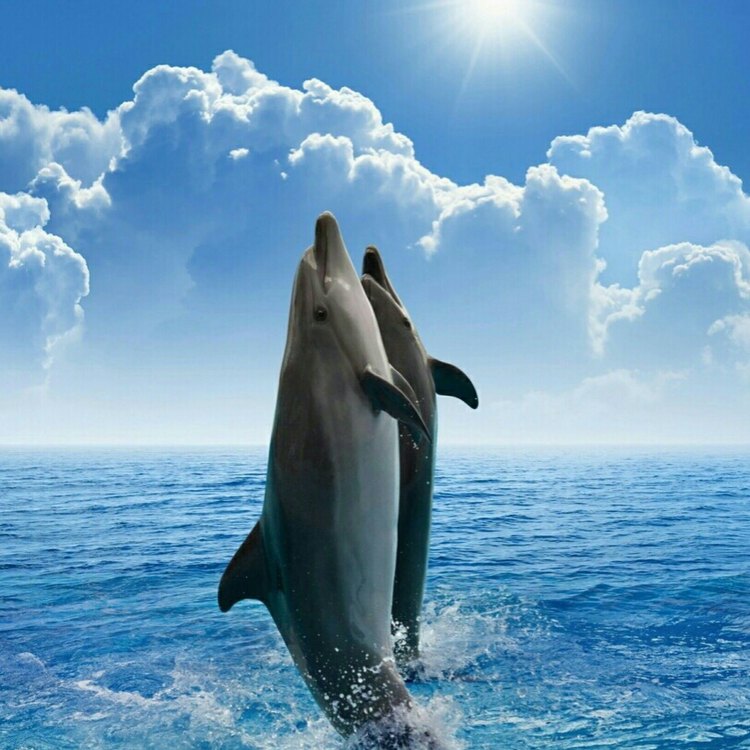
Bottlenose Dolphin
- Adult Size: Varies by species
- Average Lifespan: 40 to 50 years
- Reproduction: Sexual
- Reproductive Behavior: Breeding occurs year-round
- Sound or Call: Echolocation clicks and whistles
- Migration Pattern: Some species migrate seasonally
- Social Groups: Pods
- Behavior: Highly intelligent, playful, and social
- Threats: Habitat degradation, pollution, hunting
- Conservation Status: Varies by species, some are endangered
- Impact on Ecosystem: Key predators in their ecosystems
- Human Use: Tourism, entertainment, research
- Distinctive Features: Bottle-shaped snout, curved dorsal fin
- Interesting Facts: Dolphins are known for their acrobatic displays and high intelligence. They use echolocation to navigate and find prey. Some species of dolphins can reach speeds up to 20 mph. Dolphins are highly social animals and often form strong bonds within their pods.
- Predator: Sharks, killer whales, and humans
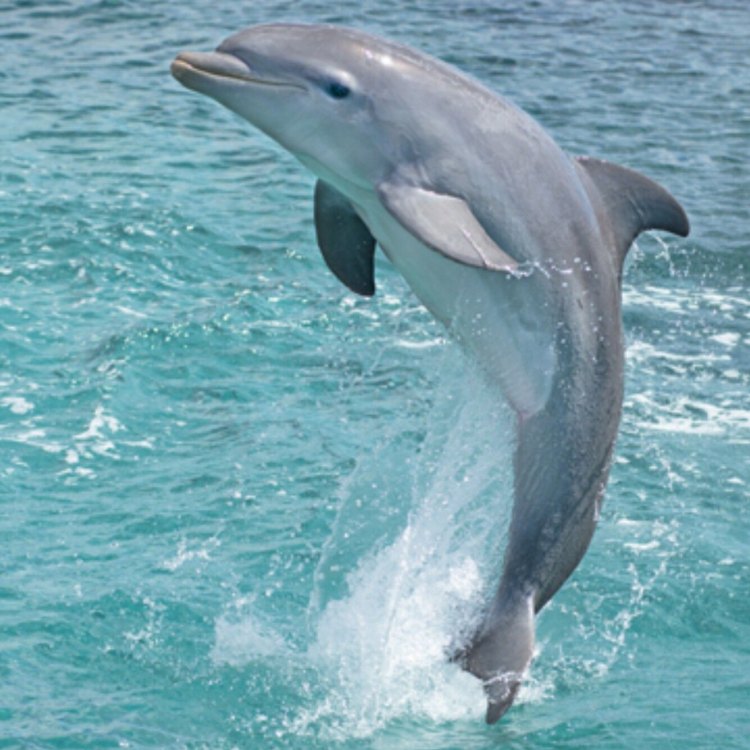
Delphinus delphis
The Magnificent Mammals of the Sea: The Fascinating World of Dolphins
Dolphins are majestic creatures that have captivated mankind for centuries. Known for their playful nature, high intelligence, and acrobatic displays, dolphins are beloved by many. These creatures have a long and complex history, and their unique features and behaviors make them incredibly fascinating to study. In this article, we will delve into the world of dolphins, exploring their physical characteristics, behaviors, environmental impact, and the threats they face PeaceOfAnimals.Com.Physical Characteristics
One of the most distinctive features of dolphins is their bottle-shaped snout, also known as a rostrum. This snout is used for echolocation, a process in which dolphins emit clicks and whistles that bounce off objects, helping them navigate and find prey. Their echolocation abilities are so precise that they can detect objects as small as a coin in the water.
Dolphins also have a curved dorsal fin, which helps them maintain balance and maneuver through the water. The shape and placement of their dorsal fin are unique to each species, making it easier to identify them. Some species of dolphins can reach up to 30 feet in length, while others are much smaller, depending on their species.
Adult Size
The size of dolphins varies by species, with the largest being the killer whale (a type of dolphin) that can grow up to 30 feet in length. The smallest is the Maui's dolphin, with an average length of about 5 feet. The most common dolphin species, the bottlenose dolphin, typically reaches about 12 feet in length Dickinsonia.
Average Lifespan
Dolphins have a relatively long lifespan compared to other marine mammals, with an average lifespan of 40 to 50 years. Some species, such as the killer whale, can live up to 80 years in the wild. This longevity is partly due to their social nature and the protection they receive from their pod.
Reproduction and Reproductive Behavior
Like most mammals, dolphins reproduce sexually. Breeding typically occurs year-round, but it can vary among species and populations. Female dolphins have a gestation period of 9 to 17 months, depending on the species. After giving birth, the calf stays with its mother for one to two years, learning essential survival skills from her.
Sound or Call
Dolphins are incredibly vocal animals and use various sounds and calls for communication. They produce clicks and whistles for echolocation, but they also use these sounds to communicate with other dolphins, search for prey, and navigate through their environment. Some species even have distinct dialects within their pods.
Migration Pattern
While some species of dolphins are sedentary and remain in one location, others migrate seasonally. For example, the spinner dolphin migrates to warm, tropical waters during the winter months. These migrations can range from a few hundred miles to thousands of miles, depending on the species and their habitat.
Social Groups
Dolphins are highly social creatures and typically live in groups, called pods. These pods can consist of up to 12 individuals, but some species, like the spinner dolphin, can form groups of over 1,000 dolphins. Within these pods, dolphins form strong bonds, and they often cooperate and work together to hunt for food.
Behavior
Dolphins are known for their high intelligence, curiosity, and playful behavior. They are incredibly social animals and form strong social bonds with their pod members. They are also curious and have been observed interacting with other marine mammals, such as whales and seals.
Aside from their social nature, dolphins are also considered the acrobats of the sea. They are known for their impressive jumps, flips, and spins, which they perform for various reasons, such as play, socialization, or communication.
Threats
Despite their intelligence and resilience, dolphins face numerous threats in their natural habitats. The most significant threat to dolphins is human activity, including habitat degradation, pollution, and hunting.
Habitat degradation is a major cause of concern for dolphins as it disrupts their natural ecosystem and food sources. Pollution also poses a significant threat, with plastic waste being a significant concern. Dolphins may accidentally ingest plastic, leading to injuries and even death. Noise pollution from boats and sonar also disturbs their echolocation abilities and can disorient them.
Unfortunately, some cultures still engage in dolphin hunting for meat or for traditional purposes, posing a significant threat to certain dolphin species.
Conservation Status
The conservation status of dolphins varies by species, with some being endangered or critically endangered. The main threats to their survival are human activities that have led to habitat destruction, pollution, and overfishing.
Efforts have been made to protect dolphins and their habitats, including establishing marine protected areas and implementing conservation plans. However, more needs to be done to ensure the long-term survival of these intelligent creatures.
Impact on Ecosystem
Dolphins play a vital role in their ecosystems as key predators. They help maintain the balance of the ocean's food web by regulating the population of fish and other marine animals. The loss of dolphins could have severe consequences for the health of the ocean and its inhabitants.
Human Use
Dolphins have long been a source of fascination and entertainment for humans, and as a result, they have been exploited for various purposes. One of the most prominent uses of dolphins is in tourism, where people can swim and interact with these creatures.
Dolphins are also used in entertainment, such as dolphin shows in aquariums and marine parks. While these activities may seem harmless, they can have negative effects on dolphins, causing stress and disrupting their natural behaviors.
On a more positive note, dolphins are also used for scientific research. Their high intelligence and social behavior make them an ideal species for studying animal communication, cognition, and behavior.
Interesting Facts
Dolphins have amazed and intrigued humans for centuries, and there is no shortage of interesting facts about these animals. Here are a few fascinating facts about dolphins that you may not know:
- Dolphins are not fish, but mammals, meaning they give birth to live young and nurse them with milk.
- Some species of dolphins can reach speeds of up to 20 mph.
- Dolphins are known to exhibit altruistic behaviors, such as helping injured or sick members of their pod.
- Bottlenose dolphins have been observed using tools, such as using sponges on their snouts to protect their noses while foraging.
- Some species of dolphins are capable of creating and using names for themselves.
- Dolphins are one of the few species, along with humans, that have sex for pleasure and not just for reproductive purposes.
- The killer whale, also known as the orca, is the largest species of dolphin.
- Dolphins have been trained to help humans in military operations, such as locating mines and enemy divers.
- Some species of dolphins have been observed engaging in unique behaviors, such as bubble blowing, bubble rings, and surfing.
Predators
As apex predators, dolphins do not have many natural predators in the ocean. Their main threat comes from humans, who hunt them for various purposes. However, while dolphins may not have many predators, they are preyed upon by larger marine animals such as sharks and killer whales. In fact, the killer whale is the only known predator of the great white shark.
Humans pose the most significant threat to dolphins, causing harm through various activities such as overfishing, pollution, and habitat destruction. It is crucial to take steps to protect dolphins and their habitats to prevent further harm to their populations.
In Conclusion
Dolphins are truly remarkable creatures, with their acrobatic displays, high intelligence, and social behaviors. These majestic mammals have a complex history and play a crucial role in their ecosystems. However, they face numerous threats from human activities, and it is essential to take measures to protect them and ensure their survival in the wild. By learning more about these amazing animals, we can all do our part to help preserve their populations for generations to come.
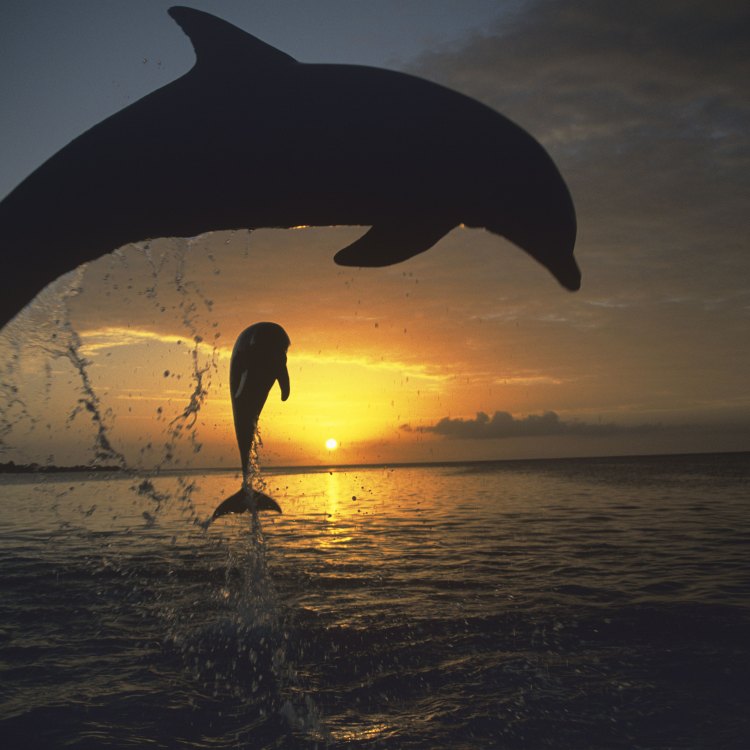
The Intelligent and Graceful Bottlenose Dolphin: A Master of the Seas
Disclaimer: The content provided is for informational purposes only. We cannot guarantee the accuracy of the information on this page 100%. All information provided here may change without prior notice.








